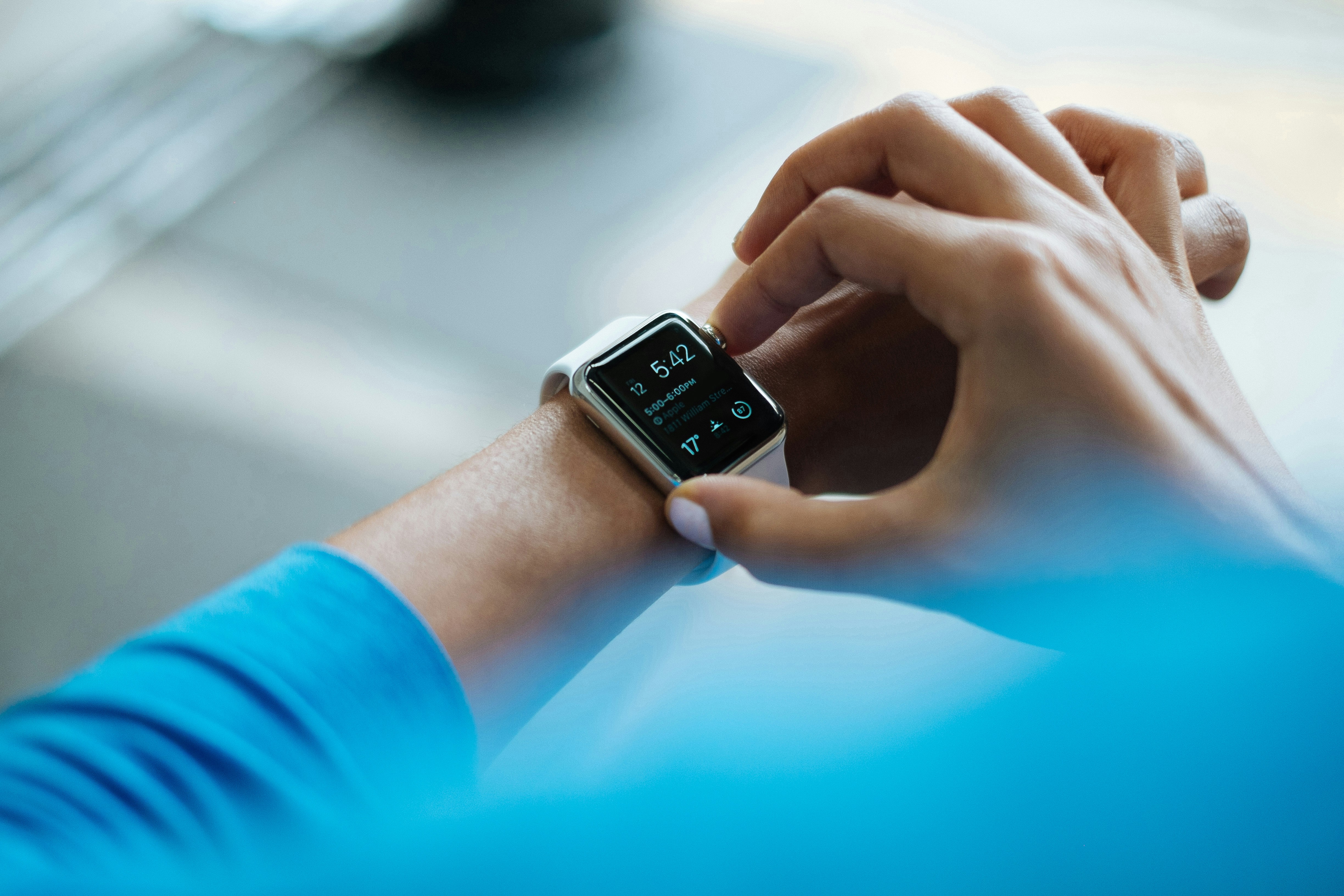
Wearable Technology In 2024
Imagine a world where your clothes not only make you look good but also enhance your daily life. In this fascinating article, we will explore the latest trends and developments in wearable technology that are set to revolutionize how we interact with the world around us. From smartwatches that can monitor and improve your health, to clothing that can charge your devices, join us as we take a glimpse into the future of wearable tech in the year 2024. Get ready to be amazed by the innovative possibilities that lie ahead!
Health and Fitness Wearables
The expansion of wearable technology, particularly fitness trackers, has skyrocketed in recent years, continuing its upward trajectory in 2024. These devices, worn comfortably on the body, have emerged as essential tools for people eager to oversee their health and achieve fitness objectives. Wearable fitness technology encompasses a diverse array of functionalities, including counting steps, monitoring heart rate, tracking sleep patterns, and analyzing stress levels. By wearing a fitness tracker, individuals can seamlessly monitor their everyday activities and make educated choices concerning their health and wellness.
In addition to basic tracking features, health monitoring has become a key aspect of wearable technology. Integration of health monitoring features allows users to monitor their vital signs and receive real-time feedback on their health status. This not only empowers individuals to take control of their well-being but also enables healthcare professionals to remotely monitor patients and provide timely interventions. From measuring blood pressure to detecting abnormal heart rhythms, wearable devices are revolutionizing healthcare by bringing advanced monitoring capabilities to the masses.
Advancements in biometric sensors have also played a significant role in the evolution of health and fitness wearables. These sensors can now measure a wide range of biometric data, including heart rate, blood oxygen levels, body temperature, and even glucose levels for individuals managing diabetes. With these capabilities, users can gain deeper insights into their overall health and make lifestyle changes accordingly. Biometric sensors are becoming more accurate, reliable, and efficient, opening up possibilities for personalized healthcare in the future.
Smart clothing has emerged as a new frontier in the fitness tracking industry. Clothing embedded with sensors and technology can provide users with comprehensive data about their body movements, posture, and performance. This information can help athletes and fitness enthusiasts optimize their training routines, prevent injuries, and enhance their overall performance. From smart shirts to leggings and even socks, wearable technology is seamlessly integrating into our everyday clothing.
Wearable technology in sports performance has also gained significant traction. Athletes and sports teams are utilizing wearable devices to track and analyze performances in real-time. These devices can monitor metrics such as speed, acceleration, distance covered, and even fatigue levels. With this data, coaches and trainers can make informed decisions about training regimens, optimize performance strategies, and minimize the risk of injuries. Wearable technology is revolutionizing the way sports are played and providing athletes with a competitive edge.
Fashion and Style Wearables
Fashion and style are no longer limited to clothing and accessories; technology has become an integral part of the fashion industry. Wearable technology has beautifully merged with fashion and design elements, allowing users to express themselves while staying connected. From smartwatches to smart jewelry and even accessories, there is an array of fashionable wearables to choose from.
The fusion of fashion and design with wearable technology has given rise to devices that are both practical and fashionable. Smartwatches, in particular, have transformed into symbols of style, offering a variety of shapes, hues, and interchangeable straps to cater to personal tastes. These wearable tech pieces effortlessly integrate with daily wear and allow for customization to align with individual style preferences. Beyond their functionality of timekeeping and fitness tracking, smartwatches have evolved into fashionable accessories that showcase one’s personal taste and fashion sense.
Smart jewelry and accessories have also become highly popular in recent years. From smart rings to smart earrings, these pieces of wearable technology not only enhance the wearer’s style but also provide functionality. Smart jewelry can track steps, monitor heart rate, and even receive notifications, all while looking like traditional jewelry. Wearers no longer have to compromise on style to enjoy the benefits of wearable technology.
Customizable wearable technology is another trend that has gained momentum. Users can now personalize their wearable devices, customizing everything from the watch face design to the colors and themes. This level of customization allows individuals to express their individuality and make their devices unique and personal. Whether it’s choosing a custom wallpaper or selecting a unique font, wearable technology is becoming an extension of one’s personal style.
Wearable technology is not just a tool for functionality; it has also become a way to express oneself. With wearable technology for self-expression, users can showcase their interests, beliefs, and personalities. From customizable LED bracelets that display unique patterns to smart accessories that change colors based on mood, wearable technology is transforming personal expression. It allows individuals to make a fashion statement while also integrating technology seamlessly into their daily lives.
Communication and Connectivity Wearables
Wearable technology has evolved to provide enhanced communication and connectivity options. Smartwatches and smart glasses have emerged as powerful communication tools, seamlessly connecting users to their digital world while on the go. These devices offer a range of features, from receiving calls and messages to accessing social media and even navigating maps.
The integration of virtual and augmented reality has opened up new possibilities for wearable technology in communication. Wearable devices can now provide users with immersive virtual and augmented reality experiences, enhancing how we communicate and interact with the world around us. From virtual meetings and conferences to augmented reality guided tours, wearable technology is changing the way we connect and collaborate.
wearable technology for seamless communication has become a reality. Advanced voice recognition and natural language processing capabilities enable users to control their devices and make calls or send messages effortlessly. With voice commands, users can dictate messages, make phone calls, and even access information without the need for traditional input methods. The convenience and hands-free nature of wearable technology make it an ideal tool for staying connected and communicating on the go.
Wireless charging and battery life improvements have also been significant developments in wearable technology. Long gone are the days of constantly worrying about battery life. Wearable devices now come with improved battery efficiencies and wireless charging capabilities, making them even more convenient to use. Users can enjoy extended usage time without the hassle of frequent charging or dealing with messy cables.
Workplace and Productivity Wearables
Wearable technology is not limited to personal use; it has also found its way into the workplace, improving productivity and safety. With wearable devices for productivity tracking, individuals can monitor their work habits, track progress, and make data-driven decisions to optimize their efficiency. These devices can provide insights on everything from how much time is spent on certain tasks to identifying potential productivity roadblocks.
Occupational safety and health wearables are becoming essential tools in ensuring the well-being of workers. From smart helmets that monitor safety compliance in construction sites to wearable sensors that detect environmental hazards, these devices help prevent accidents and protect workers in high-risk industries. By alerting users to potential dangers and tracking safety protocols, wearable technology is revolutionizing workplace safety.
Augmented reality headsets are making remote work a reality. By wearing these headsets, individuals can access virtual workspaces, collaborate with colleagues, and engage in immersive meetings from anywhere in the world. Augmented reality enables remote workers to feel as if they are physically present, fostering collaboration and productivity despite geographical distance. This technology is transforming the way we work and opening up new possibilities for remote teams.
Wearable technology is also facilitating collaboration in the workplace. Devices such as smartwatches can send notifications and alerts to keep team members updated in real-time. With wearable devices, individuals can access information and communicate seamlessly, allowing for efficient teamwork and effective decision-making. Wearable technology is breaking down communication barriers and improving workplace dynamics.
Entertainment and Gaming Wearables
When it comes to entertainment and gaming, wearable technology is taking experiences to a whole new level. Immersive virtual reality experiences have become increasingly popular, allowing users to enter virtual worlds and engage in interactive experiences like never before. From gaming to virtual tours and even educational simulations, virtual reality wearables provide an unparalleled level of immersion and engagement.
Gaming accessories and wearable controllers are also revolutionizing the gaming industry. From motion trackers to haptic feedback devices, these wearables enhance the gaming experience by making it more interactive and dynamic. Users can physically engage with the game, feeling the impacts of their actions through vibrations and other physical feedback. This adds a whole new dimension to gaming and brings players closer to the virtual world.
Mixed reality integration is blending the physical and virtual worlds in exciting ways. By combining elements of virtual reality and the real world, mixed reality wearables create immersive experiences that seamlessly merge the two realms. From overlaying virtual objects onto the real world to interacting with holographic interfaces, mixed reality wearables are transforming how we perceive and interact with our surroundings.
Wearable technology is also making its mark in the entertainment industry. From smart clothing that illuminates and changes colors in sync with music to wearable devices that provide real-time feedback during live performances, wearables are enhancing entertainment experiences. Whether it’s attending a concert or enjoying a theater performance, wearable technology adds an extra layer of excitement and interactivity to the entertainment world.
Smart Home and IoT Wearables
The integration of wearable technology with smart home devices is making our homes more connected and convenient. Wearable devices can now interface with smart home systems to control various aspects of our living environments. From adjusting the temperature and lighting to locking doors and even starting appliances, wearable technology allows for seamless home automation.
Wearable technology for home automation provides users with the convenience of controlling their homes with a simple gesture or voice command. Wearers can use their devices to turn on or off lights, adjust thermostats, or even trigger custom automation routines. The ability to control smart home devices from a wearable device adds a new level of simplicity and efficiency to home management.
IoT wearable devices are also gaining traction. These devices connect to the Internet of Things, enabling wearers to access information, receive notifications, and control IoT-enabled devices from their wearables. Want to check if you left the oven on? Simply glance at your wearable device and receive real-time updates on the status of your appliances. IoT wearables make our lives more connected and efficient by seamlessly integrating with our smart home ecosystems.
Voice-controlled wearables have become an integral part of smart home and IoT solutions. With the power of voice commands, users can control their smart home devices, access information, and even make purchases without having to reach for a smartphone or computer. Wearable devices equipped with voice assistants provide a hands-free and convenient way to interact with our smart homes.

Personalized Healthcare Wearables
In the realm of healthcare, wearable technology is making personalized care a reality. Wearable devices for remote patient monitoring have become game-changers, allowing healthcare professionals to remotely monitor patients’ vital signs, activity levels, and progress. These devices enable patients to receive personalized care from the comfort of their own homes while providing healthcare providers with real-time data to inform diagnoses and treatment plans.
Personalized healthcare solutions are emerging, thanks to wearable technology. By tracking and analyzing data from wearable devices, healthcare providers can gain insights into an individual’s health trends, identify potential risk factors, and customize care plans accordingly. The ability to tailor healthcare to each individual’s unique needs can lead to better patient outcomes and a more proactive approach to wellness.
Data-driven wearables are proving valuable in disease prevention. By monitoring biometric data and health trends over time, wearable devices can provide early warning signs and prompt individuals to take preventive actions. For example, wearables can detect irregular heart rhythms or unusual sleep patterns, alerting users to the need for further medical evaluation. This proactive approach to healthcare can help prevent the onset of diseases and improve overall wellness.
Advancements in telemedicine have been accelerated by wearable technology. With the ability to collect and transmit health data in real-time, wearable devices enable remote consultations and diagnoses. Patients can share their wearable device data with healthcare professionals, allowing for more accurate assessments and timely interventions. Telemedicine powered by wearable technology offers convenience, accessibility, and personalized care for individuals regardless of their geographical location.
Privacy and Security in Wearable Technology
With the increasing prevalence of wearable technology comes the need to ensure data privacy. Companies developing wearable devices must prioritize the protection of user data. Ensuring data privacy in wearables involves implementing robust encryption protocols, secure data storage, and strict user consent policies. Users should feel confident that their personal information and health data are protected when using wearable devices.
Securing wearable devices against hacking is crucial. These devices often connect to the internet or other devices, making them potential targets for cyberattacks. Wearable technology developers must implement robust security measures, including secure authentication protocols and regular software updates. By continuously monitoring and updating device security, wearable technology can minimize the risk of unauthorized access and protect user information.
Protecting biometric and health data is of utmost importance. Wearable devices often collect sensitive information, including heart rate, sleep patterns, and even biometric data such as fingerprints. Companies must implement stringent security measures to protect this data, ensuring it is encrypted and stored securely. Additionally, clear user control over data sharing and consent policies should be in place to prevent unauthorized access or data misuse.
User control over data sharing is essential in ensuring privacy and security. Users should have the ability to control what data is shared, with whom it is shared, and have the option to opt out of data sharing altogether. Companies must be transparent about how user data is used and provide clear options for users to manage and control their data. Giving users autonomy over their data contributes to a sense of trust and empowers individuals to make informed decisions about their privacy.
Ethical and Social Considerations of Wearable Technology
Wearable technology raises ethical implications that must be addressed. As wearable devices collect vast amounts of personal data, questions arise about how this data is used, stored, and shared. Ethical considerations include ensuring informed consent, privacy protection, and transparency in data usage. Balancing the benefits of wearable technology with individual rights and privacy is crucial in establishing ethical guidelines for its development and usage.
The social impact of wearable technology is vast. These devices have the potential to amplify existing social inequalities if not designed and implemented inclusively. Accessibility considerations must be taken into account to ensure that wearable technology is accessible and usable by individuals of all abilities. Additionally, wearable devices should be designed with diverse user populations in mind to avoid potential biases in data collection and analysis.
Addressing potential biases in data collection is essential. Wearable technology collects data from a wide range of users, and this data can inadvertently reflect biases present in society. Developers must be conscious of potential biases in data collection and analysis algorithms and work towards inclusive and representative data sets. By addressing biases, wearable technology can provide unbiased and equitable solutions for all users.
Creating inclusive wearable technology is crucial. Wearables should be designed to accommodate diverse needs and preferences, incorporating universal design principles. From adjustable straps to intuitive user interfaces, wearable devices should provide a seamless experience regardless of age, gender, or ability. Inclusivity should be at the forefront of wearable technology development, ensuring that everyone can benefit from its advancements.
Challenges and Future Directions of Wearable Technology
Improving battery life and power efficiency remains a significant challenge for wearable technology. As these devices become more sophisticated and offer more features, the demand for longer battery life increases. The development of more efficient batteries and power-saving technologies is crucial to meet the growing demands of wearable technology users.
Developing flexible and more comfortable wearables is an area of focus for the future. Wearable devices often need to conform to various body parts, requiring flexibility and comfort. Advances in flexible and stretchable materials, as well as innovative design approaches, are set to provide users with more comfortable and wearable-friendly devices. The goal is to create wearables that seamlessly integrate into our lives without compromising comfort or style.
Fashion collaborations with tech companies are becoming increasingly prevalent. Tech giants are partnering with fashion designers to create wearable devices that are not only innovative but also aesthetically appealing. By merging technology with fashion, wearables can become more easily accepted by the mainstream market. Collaborations between tech companies and fashion designers will likely continue to shape the future of wearable technology.
Integration of AI and machine learning in wearables is set to revolutionize the industry. These technologies can analyze vast amounts of data collected by wearables and provide personalized insights and recommendations. By leveraging AI and machine learning, wearables can proactively detect patterns, identify anomalies, and offer actionable feedback to users. The integration of these technologies will push the boundaries of wearable technology and enhance its capabilities in various domains.
In conclusion, wearable technology has become an integral part of our lives, transforming various aspects of our daily routines. From health and fitness tracking to fashion and style, communication and connectivity, workplace productivity, entertainment and gaming, smart home automation, personalized healthcare, privacy and security, ethical considerations, as well as future challenges and directions, wearable technology is shaping the future. With advancements in technology, battery life improvements, and collaborations between tech companies and fashion designers, the future of wearable technology is bright. As wearables become increasingly ingrained in our everyday lives, it is essential to prioritize privacy, security, inclusivity, and ethical considerations to ensure that these devices are beneficial to all individuals.








